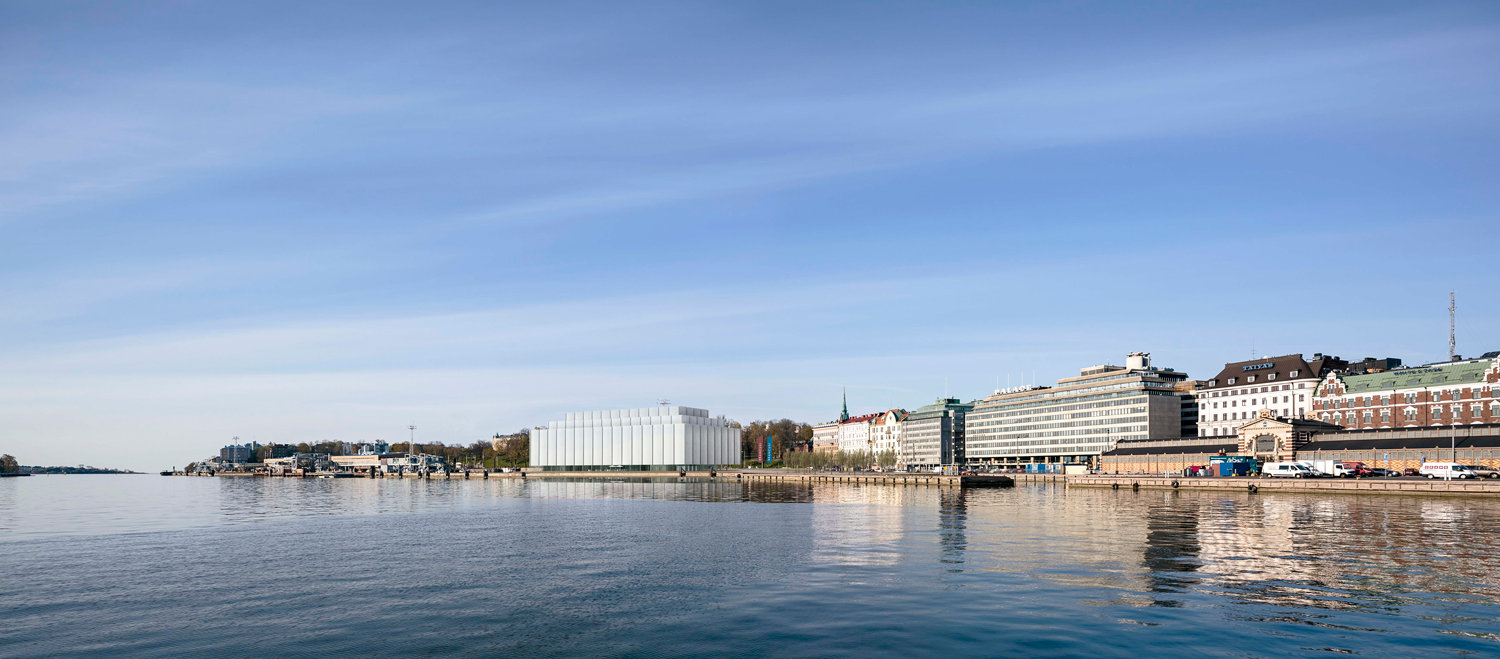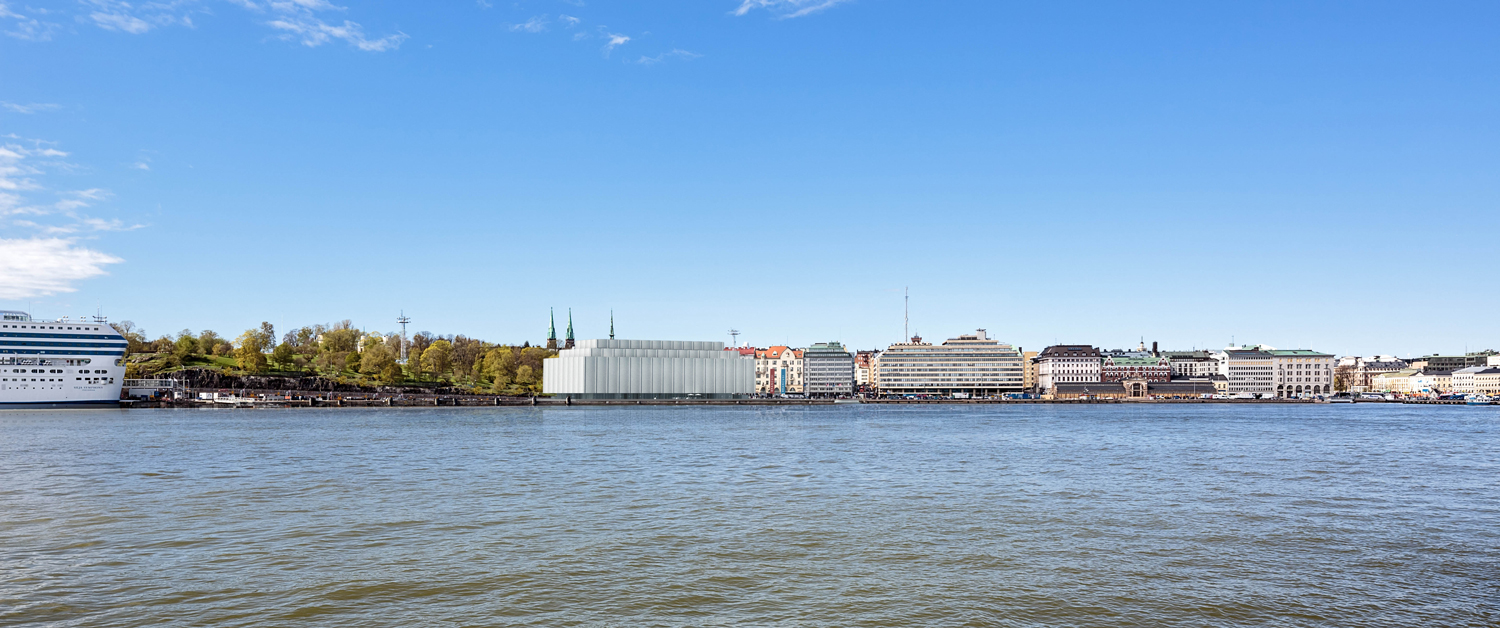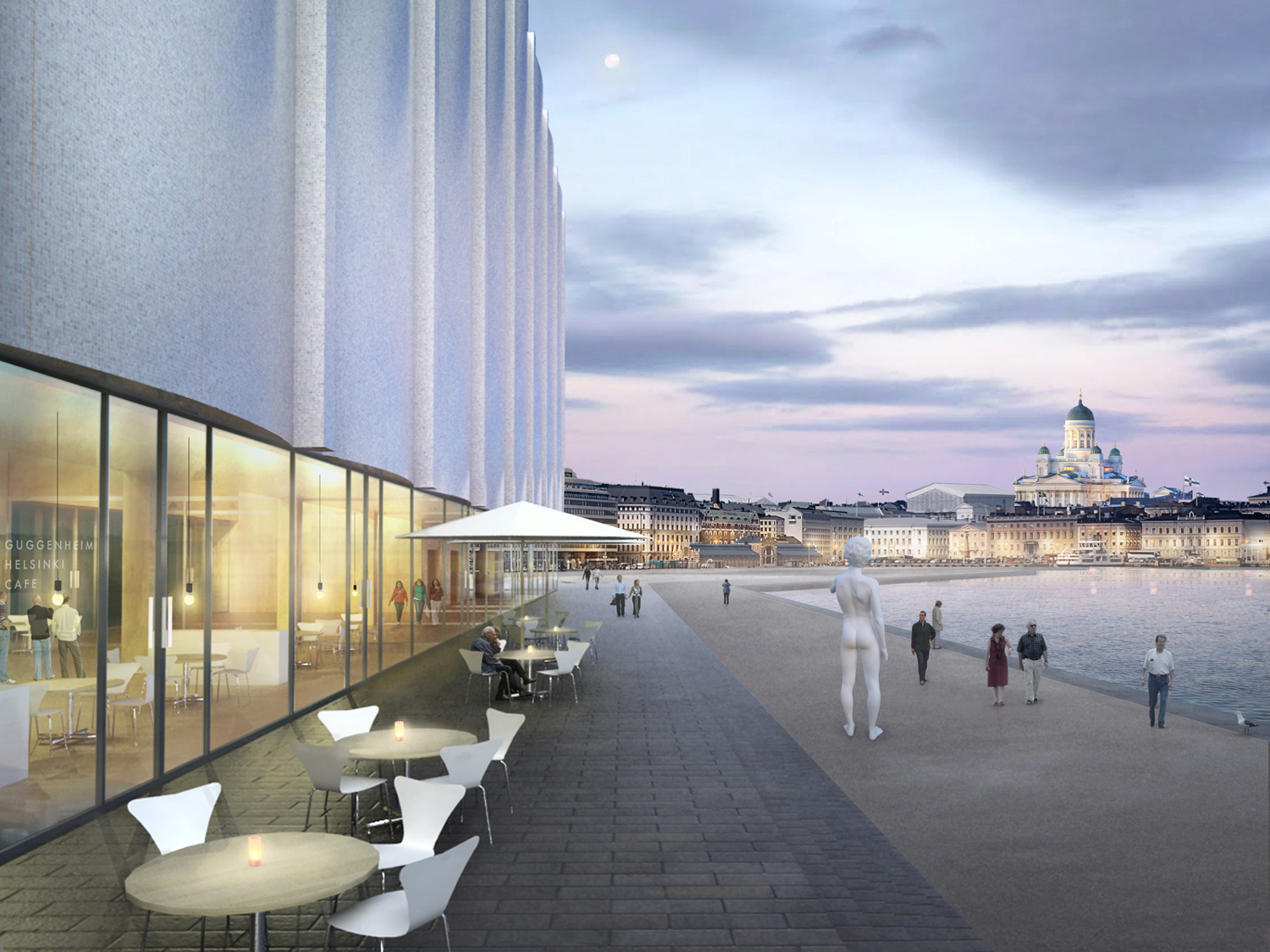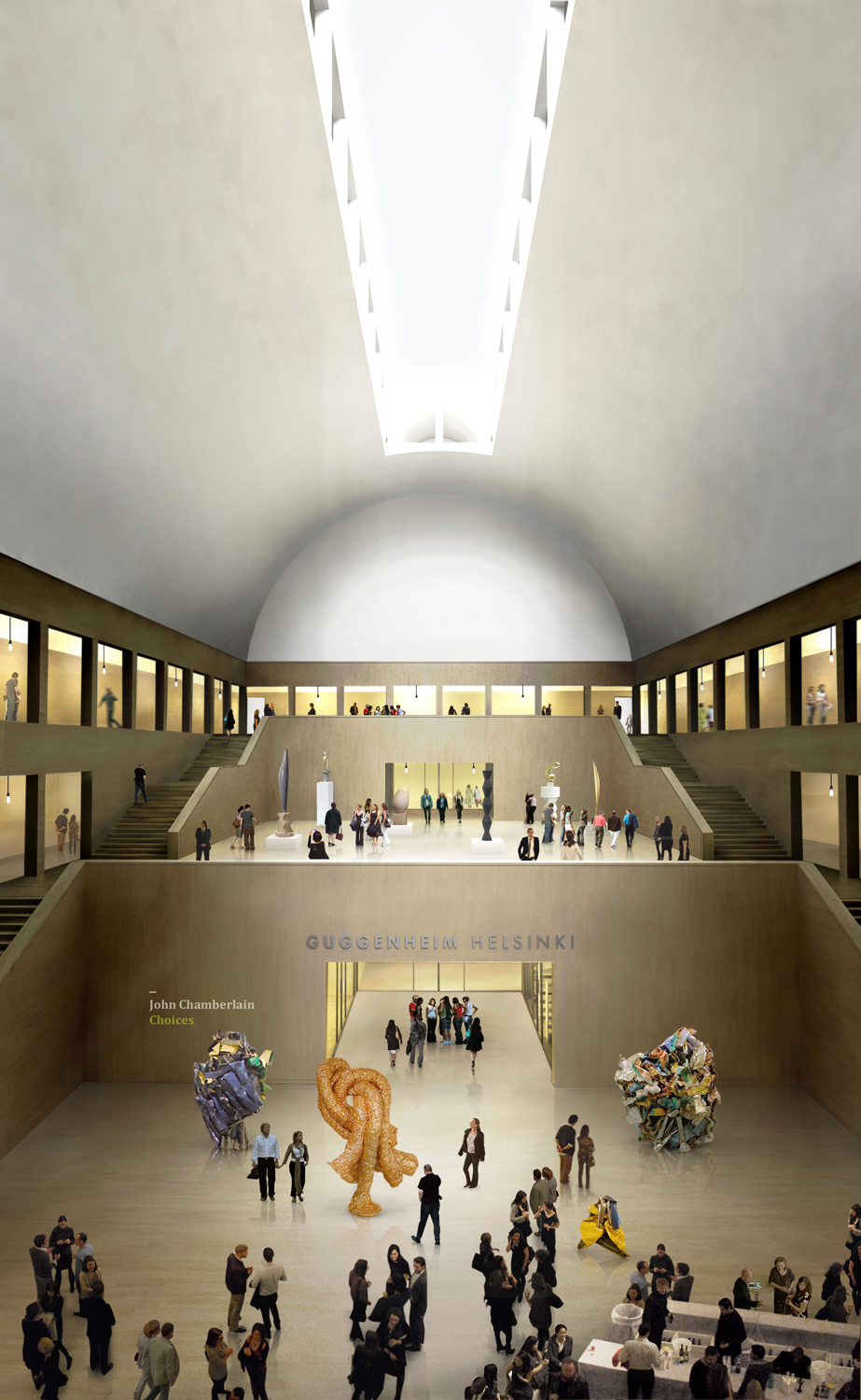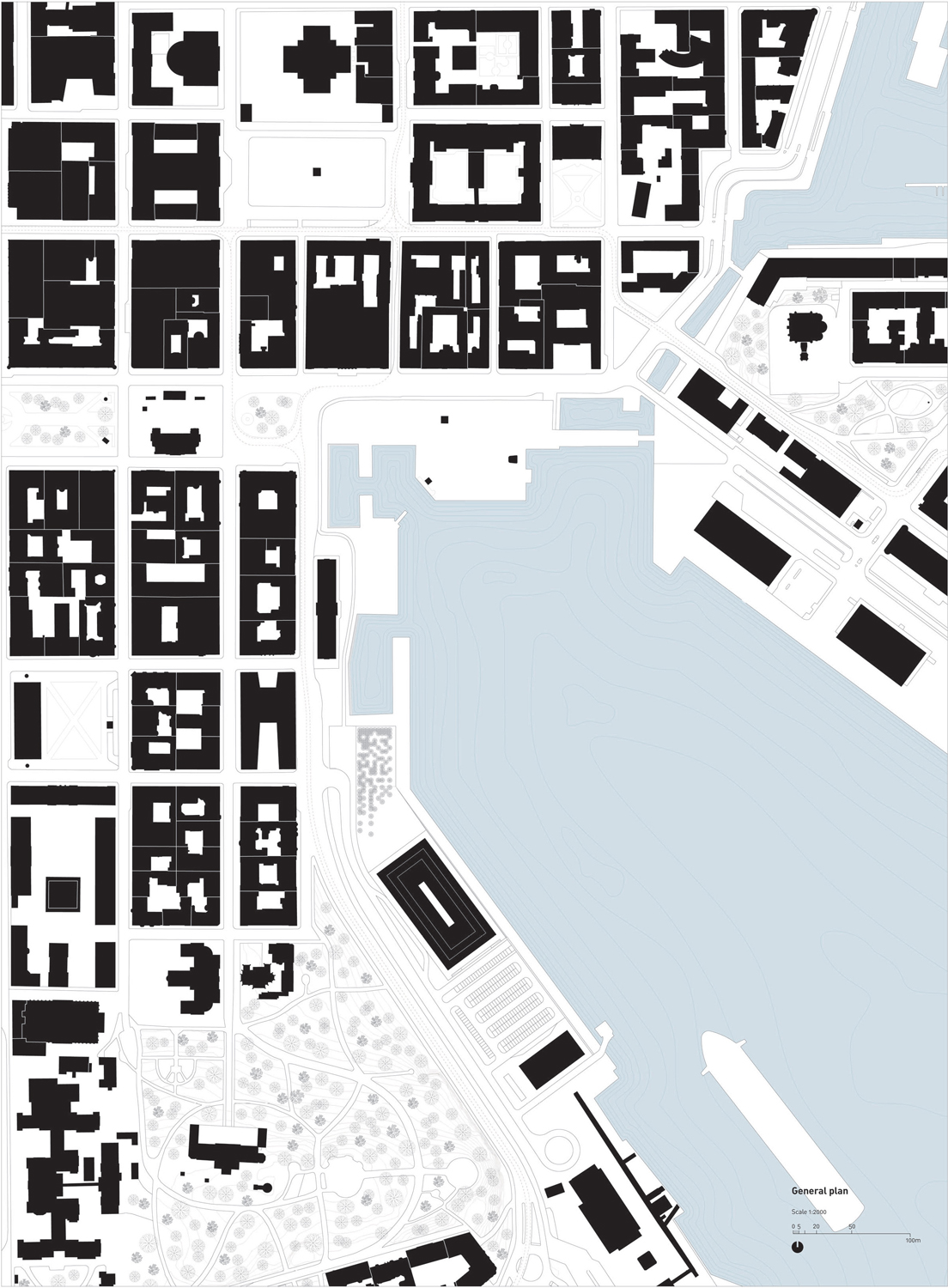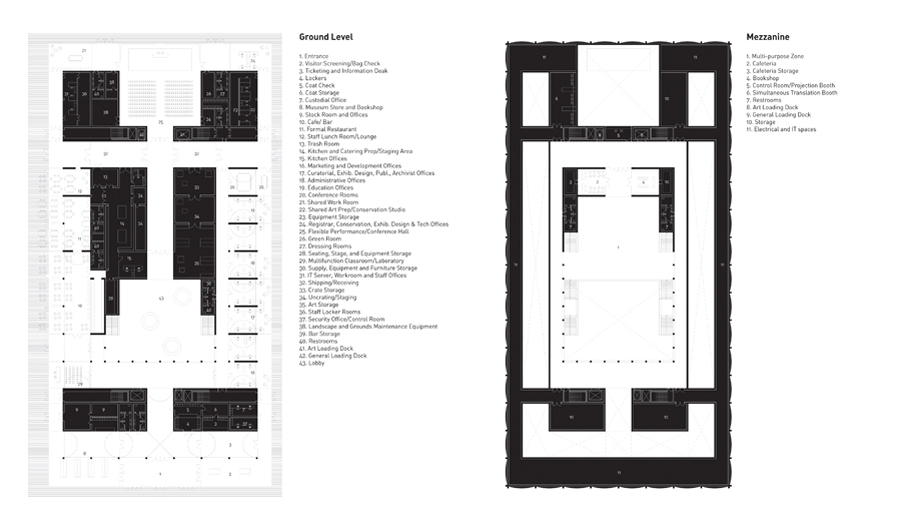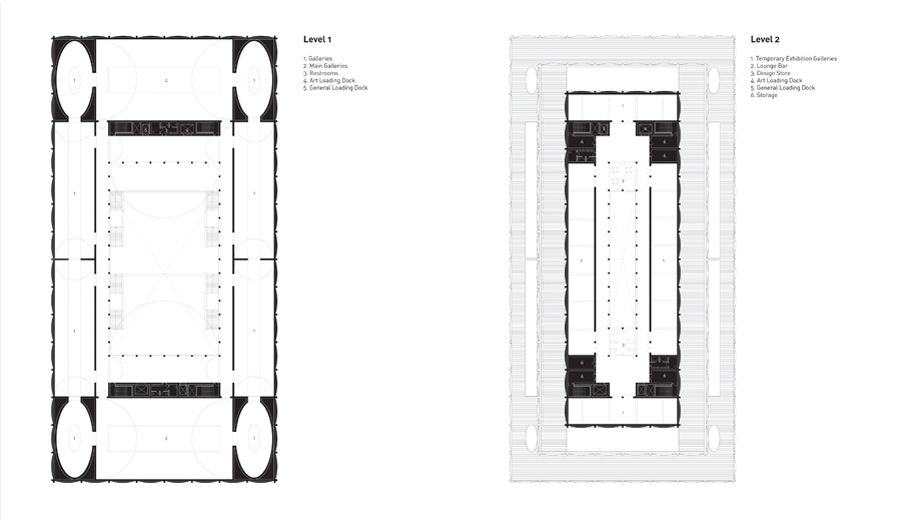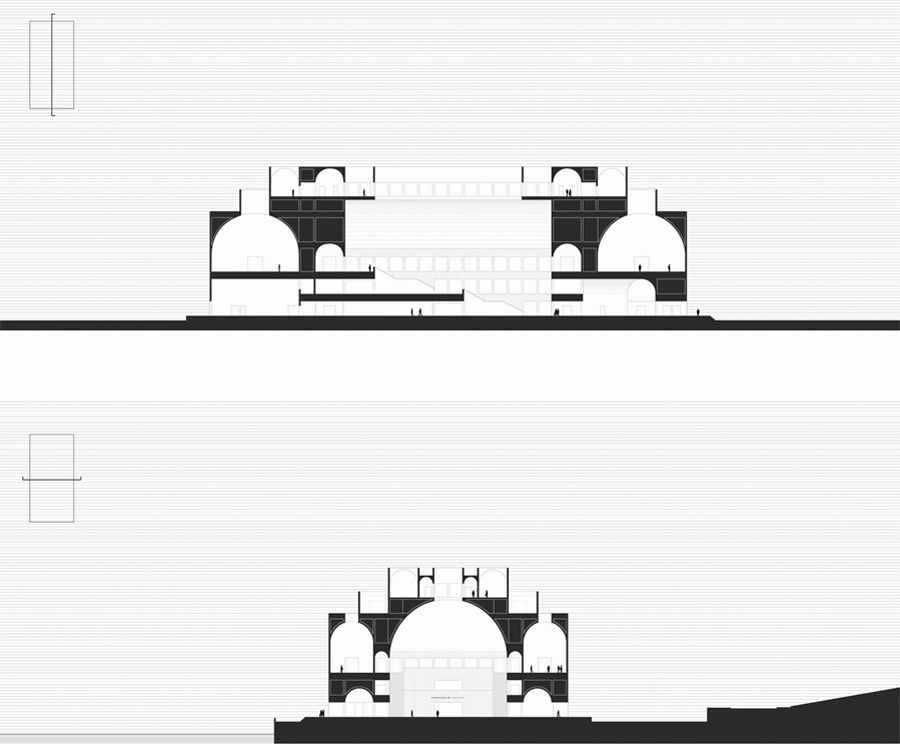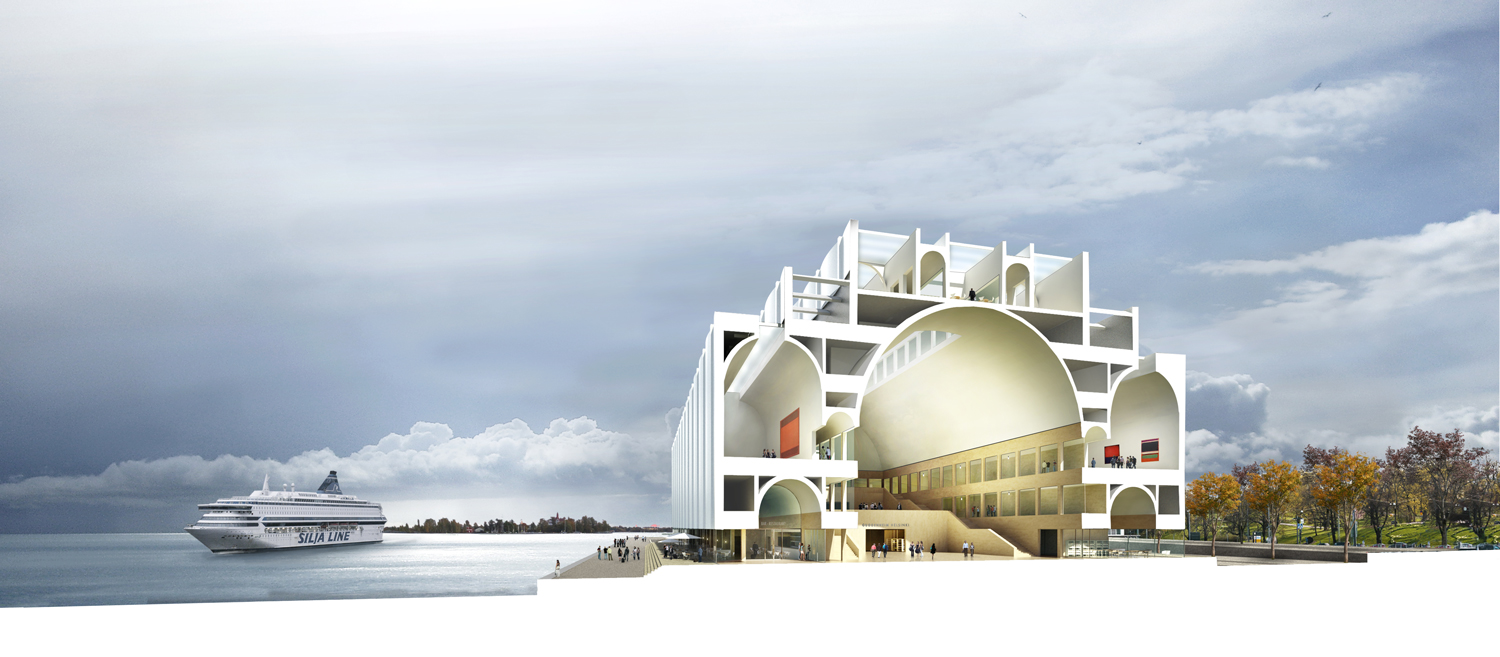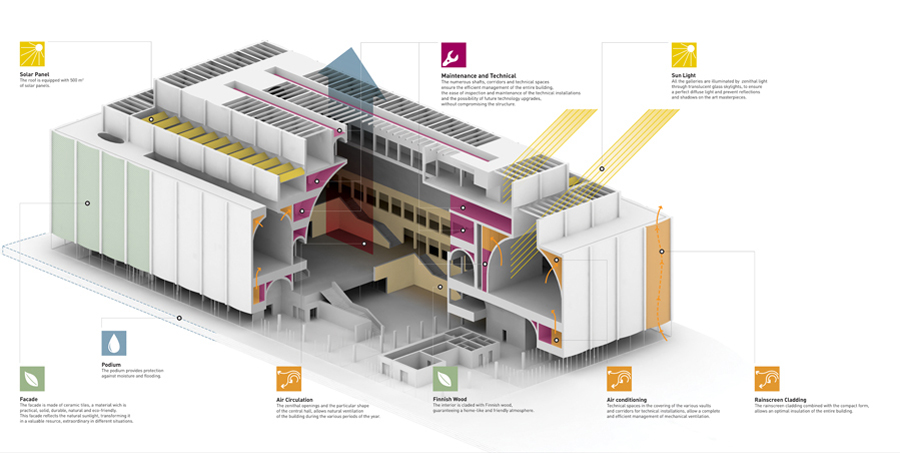1121-CAM-HEL.FI-2014
Clients: Helsinki Municipality, Guggenheim Foundation
Status: Competition (2014)
Location: Helsinki, Finland
Climate: Continental, Temperate
Material: Concrete
Environments: Seaside, Park
Visualizer: Studio
Scale: Large
Types: Cultural, Museum
The proposal for the new Guggenheim museum in Helsinki is based on the attempt to act in accordance with the neoclassical grid layout of the historical city. Placed at the intersection of two different grid orientations, the new museum is conceived on one side as a terminal element for the continuous street facades that surround the harbor, and – on the other side – as an urban exception, underlined by its different orientation.
The volume of the new museum is based on the dimensions and proportions of the surrounding blocks and – considered its proximity to the port – its scale has to be related to the mass of the gigantic ships floating in front of it. The simple exterior volume mimics the “indifference” of the industrial port buildings, which surround the harbor.
The museum is intended to enclose a new public space in front of it: an open stage positioned between the frontal facade of the new Guggenheim, the existing urban blocks along Eteläranta and the waterfront. An artificial urban “forest” is placed at the entrance of this new public space, acting as proscenium that separates the urban space and the “art space”. It is here that the visitor’s journey can begin.
Passing through a lowered and narrow entrance, surrounded by the ticket office office and the other services, the visitor would enter into a generous vaulted atrium conceived as a covered public square illuminated by zenithal light. This internal space, disconnected from the urban life and the external mutable weather, would be always active and lively. Two lateral stairways lead from the ground level, through a mezzanine with the multipurpose space, to the interior arcade, which connects all the exhibition spaces.
The intention of the project is to increase the physical and critical distance in the visitor’s access to the exhibited art. The interior atrium, the real heart of the museum, is conceived as a void, a timeless and autonomous space in which the “spectacle” of art can take place. The ambition is to construct a surprising progression in which the visitor, passing through a sequence of spaces and experiences, can finally find an abstract space dedicated to art.
